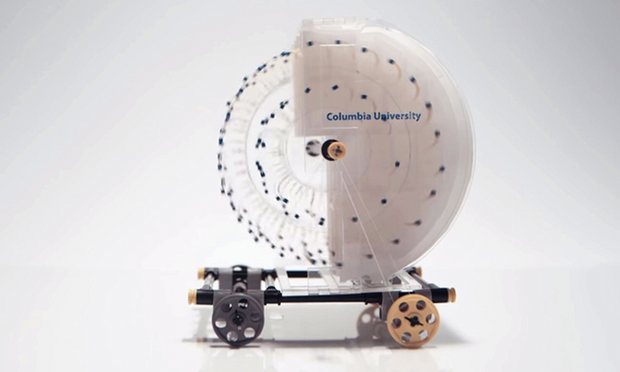
Scientists at New York’s Columbia University have developed two novel devices that harness the power of evaporating water — a floating piston-driven engine that powers a flashing LED lamp, and a rotary piston-driven engine that drives a miniature car.
Using these engines, the scientists demonstrated an electricity generator that rests on water while harvesting its evaporation to power a light source, and a toy car that moves forward as the water in the car evaporates.
Lead author of the research, Dr Ozgur Sahin predicts when evaporation energy is scaled up, it could one day produce electricity from giant floating power generators that sit on bays and reservoirs, or from huge rotating machines akin to wind turbines that sit above water. According to Sahin, evaporation-driven engines may find applications in powering robotic systems, sensors, devices and machinery that function in the natural environment.
“Water wants to evaporate. It has a desire to evaporate. If you make a surface wet, it will dry up, that’s the natural course. What we did was find a way to channel that desire into doing some useful work.”
The technology is inspired by the property of bacterial spores, which expand when they absorb moisture and contract when they lose it. Dr Sahin and his team calculated the energy involved in expanding and contracting mixed billions of spores with diluted glue; created a kind of paste and applied it to both sides of a thin, double-sided plastic tape akin to that in cassette tapes—sections of which functioned as artificial muscles or hydra, expanding and contracting with changes in humidity.
The Guardian explains:
Using dozens of hydra, the scientists went on to build a rudimentary piston engine. The hydra is put inside a plastic case that has little shutters overhead. When placed on water, evaporating moisture makes the hydra elongate and open the shutters above them. This allows the moisture in the case to escape, causing the hydra to contract and the shutters to close again. The cycle then repeats. In tests, the scientist found the engine generated enough electricity to make an LED bulb flash on and off.
The scientists call their second invention a moisture mill. The machine has a plastic wheel covered with plastic tapes that are coated with spores on one side. Half the wheel is kept in dry air, which causes the tabs to curl up, while the other half is in more humid air, which causes the tabs to straighten out. Left to its own devices, the wheel spins around, and was powerful enough to drive a small toy car.
Xi Chen, a postdoctoral fellow in Dr Sahin’s lab, speculates that with its current power output, the floating, piston-driven engine could supply small floating lights or sensors that monitor the environment at the ocean floor. An improved version with stickier plastic tape and more spores, could potentially generate even more power per unit area than a wind farm, he adds.
With regard to the rotary piston-driven engine, Dr Sahin believes it may be possible to design engines — which would require neither fuel to burn nor an electrical battery — that use the mechanical energy stored in spores to propel a full-sized vehicle in future.
However, Peter Fratzl, a bio-material researcher at the Max Planck Institute of Colloids and Interfaces, told Quartz:
“The work pushes a great idea all the way into a practical demonstration of the potential… I do not believe that this kind of system will revolutionize transport or other high-power applications, but it may provide the small power needed in remote places to operate communication devices.”
This article (Columbia University Scientists Create Renewable Devices Powered by Evaporating Water) is a free and open source. You have permission to republish this article under a Creative Commons license with attribution to the author and AnonHQ.com.




